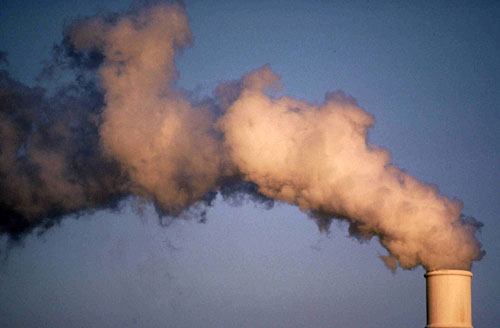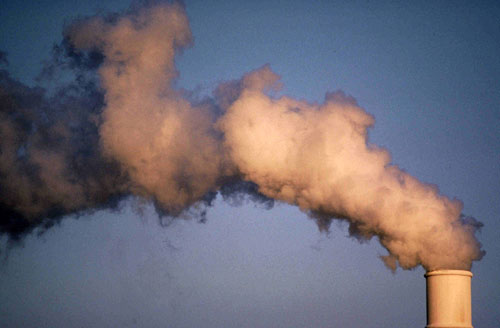
pixnio
A few months before the conference, the Polish Government’s special envoy for climate, Tomasz Chruszczow, urged not to get involved in “climate ambitions” and not to urge the country to increase emission reduction commitments, but to concentrate on harmonizing rules of the Paris Agreement (PA) and becoming “realistic in implementing climate change”.
President of the UN Conference (it takes place in the coal region of the country, Upper Silesia), Polish Deputy Energy Minister Michał Kurtyka announced priorities of the summit from the point of view of the organizers: increasing role of forests, including northern ones, in maintaining the climate, promoting electric transport to reduce greenhouse gas emissions, as well as the “dignified” future of employees of the fossil fuel industry, which will potentially affect the world’s transition to a low-carbon economy (in 2017, the share of coal in electricity production in Poland was 78%).
Formally, the main objectives of the conference are to approve PA rules, increase aid to weak and vulnerable countries (primarily contributions to the Green Climate Fund over the next five years), strengthen countries' emission reduction goals, as well as demonstrate and support sub-national initiatives (cities, regions and companies), role of which has increased markedly in recent years. It is not easy to assess the extent to which negotiators can agree on the rules: recall that the PA approved in 2015 is rather a compilation of general principles of long-term international cooperation, each of which requires detailed elaboration and clarification. Among its key issues are emissions reporting and the development of new economic mechanisms.
However, it is already clear that the negotiations will take place in a rather difficult situation. Recall that in the summer of 2017, US President Donald Trump announced plans to withdraw the United States from the Paris Agreement. Already this year, Turkey refused to ratify (primarily because of falling into the group of conditionally developed countries that cannot receive financial assistance from the Green Climate Fund). The newly elected Brazilian President Jair Bolsonaro also expressed doubts about appropriateness of the country's further participation in the agreement, primarily due to “interference” of the international community in the country's forest policy in Amazonia: at the end of last week, the government notified the UN climate secretariat to withdraw the application for the next conference on climate (in 2019) in its capital, Brasilia. Currently, 184 countries (out of 195 signatories) have ratified the PA.
Against this background, global greenhouse gas emissions began to grow again. It happened for the first time in the last four years (by 1.2% in 2017), primarily due to “discrepancy between promises of countries and their specific actions”, as well as increase in emissions in China (after two years of decline), according to a study published by the beginning of the United Nations Environment Program conference. The report's authors also argue that the world's greenhouse gas emissions will not reach a maximum by 2030, even if countries fulfill all their promises made for the PA. At the end of November, the Executive Director of the United Nations Environment Program, Erik Solheim, resigned due to charges of spending about $ 500,000 on traveling for two years (which, according to UN auditors, were “uneconomic”, including business class and flights of expensive airlines), as well as spending almost 80% of the time outside the organization’s headquarters in Nairobi.
There is also positive news. On the eve, analytics noted a steady increase at EU Emissions Trading System and at other markets (including carbon regulation systems in some US states). In addition, last week the EU (being the fourth largest issuer of emissions in the world with share is 10% of global emissions) presented a draft long-term strategy for zero greenhouse gas emissions by 2050, including the goal of generating 80% of electricity based on renewable sources for the same term. However, the climate policy of the EU countries cannot be called stable either - it is still unclear how Brexit will affect the emission reduction plans, what are prospects for reducing coal generation or “leaving coal” in Germany (though the country is not likely to reach emission reduction targets for 2020), as well as the future of climate policy in France (where President Emmanuel Macron recently announced plans for a threefold increase in wind generation and fivefold – in solar energy by 2030) on the background of mass protests against increase in taxes on gasoline and diesel fuel (caused, among other things, by the government’s intentions to raise the carbon tax, the funds of which are also used to support renewable energy).
source: reuters.com
President of the UN Conference (it takes place in the coal region of the country, Upper Silesia), Polish Deputy Energy Minister Michał Kurtyka announced priorities of the summit from the point of view of the organizers: increasing role of forests, including northern ones, in maintaining the climate, promoting electric transport to reduce greenhouse gas emissions, as well as the “dignified” future of employees of the fossil fuel industry, which will potentially affect the world’s transition to a low-carbon economy (in 2017, the share of coal in electricity production in Poland was 78%).
Formally, the main objectives of the conference are to approve PA rules, increase aid to weak and vulnerable countries (primarily contributions to the Green Climate Fund over the next five years), strengthen countries' emission reduction goals, as well as demonstrate and support sub-national initiatives (cities, regions and companies), role of which has increased markedly in recent years. It is not easy to assess the extent to which negotiators can agree on the rules: recall that the PA approved in 2015 is rather a compilation of general principles of long-term international cooperation, each of which requires detailed elaboration and clarification. Among its key issues are emissions reporting and the development of new economic mechanisms.
However, it is already clear that the negotiations will take place in a rather difficult situation. Recall that in the summer of 2017, US President Donald Trump announced plans to withdraw the United States from the Paris Agreement. Already this year, Turkey refused to ratify (primarily because of falling into the group of conditionally developed countries that cannot receive financial assistance from the Green Climate Fund). The newly elected Brazilian President Jair Bolsonaro also expressed doubts about appropriateness of the country's further participation in the agreement, primarily due to “interference” of the international community in the country's forest policy in Amazonia: at the end of last week, the government notified the UN climate secretariat to withdraw the application for the next conference on climate (in 2019) in its capital, Brasilia. Currently, 184 countries (out of 195 signatories) have ratified the PA.
Against this background, global greenhouse gas emissions began to grow again. It happened for the first time in the last four years (by 1.2% in 2017), primarily due to “discrepancy between promises of countries and their specific actions”, as well as increase in emissions in China (after two years of decline), according to a study published by the beginning of the United Nations Environment Program conference. The report's authors also argue that the world's greenhouse gas emissions will not reach a maximum by 2030, even if countries fulfill all their promises made for the PA. At the end of November, the Executive Director of the United Nations Environment Program, Erik Solheim, resigned due to charges of spending about $ 500,000 on traveling for two years (which, according to UN auditors, were “uneconomic”, including business class and flights of expensive airlines), as well as spending almost 80% of the time outside the organization’s headquarters in Nairobi.
There is also positive news. On the eve, analytics noted a steady increase at EU Emissions Trading System and at other markets (including carbon regulation systems in some US states). In addition, last week the EU (being the fourth largest issuer of emissions in the world with share is 10% of global emissions) presented a draft long-term strategy for zero greenhouse gas emissions by 2050, including the goal of generating 80% of electricity based on renewable sources for the same term. However, the climate policy of the EU countries cannot be called stable either - it is still unclear how Brexit will affect the emission reduction plans, what are prospects for reducing coal generation or “leaving coal” in Germany (though the country is not likely to reach emission reduction targets for 2020), as well as the future of climate policy in France (where President Emmanuel Macron recently announced plans for a threefold increase in wind generation and fivefold – in solar energy by 2030) on the background of mass protests against increase in taxes on gasoline and diesel fuel (caused, among other things, by the government’s intentions to raise the carbon tax, the funds of which are also used to support renewable energy).
source: reuters.com


















